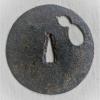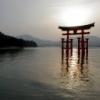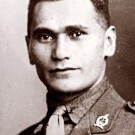Leaderboard
Popular Content
Showing content with the highest reputation on 01/10/2026 in all areas
-
That picture of yours is stunning Kirill. When you combine high quality sword and high quality photography the result is amazing. I've been on a good roll on NBTHK monthly kantei but I must admit my real kantei skills suck. As I've been doing it for several years it is easy to catch some pointers that they sometimes use, had to check that I got that one correct. For example "The hada is visible and is a unique hada" in their English description points to zanguri. Usually that is pushing it to Horikawa and for 2 character signature I think Kunihiro is the logical answer. For me this is book knowledge that I have, in real life I could not say what is zanguri hada, as I don't have too high real life kantei skills. I saw this ōdachi at Nagoya Tōken World last summer, and it is my favorite Owari sword: https://www.touken-world.jp/search/127485/ maybe massive kissaki and strong width might hint that sword in OP could have been originally a big one like this one. Of course as I like ōdachi that would be my wishful thinking. I have seen the even larger 1620 dated Kanetake ōdachi at Atsuta Jingū few times but I don't like that much maybe as much. So far I have not yet seen the shorter Kanetake ōdachi of Atsuta Jingū, maybe some day I will. Of course NBTHK might have more than likely the most probable outcome. I just personally would wish they might have had more general attribution, like mumei Owari - Keichō-Shintō etc. Of course that is their style to go for direct attributions for specific smiths, I don't personally like that but I understand how that is what people actually want. Most would be probably very disappointed in just general attributions that would state roughly province and time period. Big thanks of all the comments and discussion, it is really much more fun to have discussion than just think about all the things alone.4 points
-
Dale, this TSUBA seems to have a "true" ORIKAESHI folding rim. The description of the SUKASHI as KATABAM/wood sorrel is correct. Apple blossoms have five petals like most ROSACEAE.2 points
-
Happy New Year all. Reviving this topic from mid last year as I wanted to share another piece I acquired and how the information provided in this thread helped me make an informed decision. The Nebikimatsu theme was completely new to me and members of this wonderful forum helped crack it. So when I came across this piece described as "feathers," I immediately recognized what it actually was...and was quite thrilled as it appears to be very rare motif in Echizen tsuba. It's fitting that the theme is associated to the new year, and if you are ever in Japan over the new year period, you will definitely see the pine decorations on display around shop entrances all around...like this massive one I found outside a Seibu in Fukui City on my most recent trip. Wishing everyone a great 2026. All the best. Damon2 points
-
Kosyu Hikone Jyu Mogarashi Nyudo SOTEN Sei Goshu/Kosyu Hikone Ju (江州彦根住): "Resident of Hikone, Omi Province (Goshu)". Mogarashi Nyudo Soten Sei (藻柄子入道宗典製): "Made by Mogarashi Nyudo Soten".1 point
-
1 point
-
Hard to determine the age without having it in hand, Alain. If forced I would say not later as Momoyama… Not very satisfying, I know! Maybe a candidate for our shinsa in Utrecht scheduled in June1 point
-
1 point
-
1 point
-
I've seen some people refer to that design of a triangle with two semicircles as "insect eyes":1 point
-
Hi all, Bit late to this post but I am making habaki at the moment. Dont have much time at present but Im hoping to be able to spend more time on nihonto as I gently slide into retirement. At present working directly on nakago but with my polished blades I will be making a metal blank to hammer on. Thats an option- measure or get someone to accurately measure and then forward detailed sketch to a maker?! As far as guys in USA I had a habaki made by John Tirado and extremely happy with end result. Enjoy the journey Cheers Mike1 point
-
1 point
-
Thomas @Kiipu: I was re-reading the article on the Meiji 25 pinned by Nick Komiya on warrelics and I had a question. In the first couple of pages, Nick and you talk about several changes proposed to the design of the Meiji 25. It reminded me of this one posted on worthpoint that was listed as a "prototype." Could this be one of the prototypes or is it one of the lesser seen variants? Note the release button has moved from the backstrap to the fuchi area. https://www.worthpoint.com/worthopedia/variation-Japanese-sword-1892-type-25-18196365821 point
-
Once you get the hang of posting photos it’s dead easy. (Crop each of your photos right after you take them. Get rid of the unnecessary background.) Once you choose the photo you wish to post, (start with one), your iPhone will offer a drop-down menu where you can choose large, medium etc. This NMB site is comparatively good though when it comes to permitted sizes. Good luck!1 point
-
Quite entertaining, especially for novices who don't know much about Nihonto.1 point
-
Great video and explanation for those unfamiliar with nihonto. But as I watched the curator bend the blade, I doubted that the strict prior Japanese curator would have approved.1 point
-
1 point
-
1 point
-
1 point
-
That was my first thought too when I saw the pictures on Buyee. But looking at the signature I have seen it was signed Kyozan Mistunaka [Kao] in kinzogan. Mitsunaka is one of my favorite artist. Washida Mistunaka tsuba are rarely seen on the market signed and with peonies and karakusa decoration. Usually Mitsunaka (signed or from his workshop) are usually characterized by very high quality iron and the kin zogan is usually also of high quality rarely missing some pieces. From the pictures, except for the rust that looked superficial, the iron looked in good shape and the kin zogan didn't show any missing pieces. Thus I decided to take the risk. In the end I was just lucky. As I was lucky to find Manuel that made such a wonderful restoration work. Regards Luca1 point
-
1 point
-
1 point
-
1 point
-
Hi Will, welcome to the forum. Could you give us some dimensions of your guard? This design seems to be difficult to find, so not common, but I found something with a rim design with more folded or carved "lobes" in Greville Cooke's "Birmingham Museum & Art Gallery Tsuba Collection V2" Not the same school I believe, as yours looks much thicker. I have a feeling I have seen another somewhere but I have a lot of books to search!1 point
-
We always remember our first. I was fortunate to be invited to visit the home of a German collector in May 2024, where I was given the opportunity to study 3 Juyo blades in hand. I held the nakago of the first blade so tightly and so intensely, the owner even commented on the heat transfer. He was probably hoping I wasn't related to Uri Geller.1 point
-
Nice hanpō regardless of age, Alain! One small correction. The three-stage tare is not made of hon-kozane, but of iyozane. A subsequent development of armor scales…1 point
-
Hi Will, I found this one in the Metropolitan Museum of Art. More elaborate but has some of the features to yours. https://www.metmuseum.org/art/collection/search/29973 The hitsu shapes on yours are interesting, I think they may represent gourds like on this one.1 point
-
Hi Thomas. It could definetly be Washida (probaly from the workshop of the 4th generation Mitsunaka) even though they usually come with a silver fukurin in the inome sukashi. Here is one from my collection It is identical to two NBTHK papered one that are attributed to Washida and Washida den. It could also be Kaga Yoshiro. The iron looks like typical Washida. If you could zoom on the the arabesque leaves there are some differences on how they are inlayed between Washida and Yoshiro. Take a look at Section A.6 of this pdf file: Here is another one from my collection of uncertain attribution for which I am leaning toward Yoshiro rather than Washida due to the inlay used in the leaves. I hope it helps Regards Luca1 point
-
Every established collecting community with items at high level has either individual or collective appraisals. With top tier paintings there are institutes dedicated to specific artists or schools and you are expected to submit a painting for their consideration, unless its already well known and published. Sometimes there is an alternative when there is an individual who publishes catalogue raisonne than you send the painting to him and he writes back description and whether it will be included in the next edition. Until 1960s museums in general offered opinions to anyone inquiring, now its considered unethical to do so because museums are trying to separate themselves from the unclean world of money and also avoid any controversies. There are countries like Russia, to lesser extent China, and many others in Asia where there is a government certified expertise in regards to any "weapon" that might have cultural or historic value. Overall estimation and valuation is approached with far lesser hesitation in Asia compared to Europe. There is no concept of "equality" but rather you are always facing your grades, class standing, achievements being publicly catalogued and displayed. People are very forward about perceiving themselves as X seat in their profession. If someone says "I am 45th grandmaster in chess" he is from Asia. Other people sometimes say "I am top three" or "top five", but everything below is vague and flexible. In Asia assigning levels to any work, including artwork, is very natural by comparison, and constantly submitting pieces for appraisal is a norm. If you a "writer" it means you got 1st prize in at least two of first or second tier competitions. Otherwise you are just a person who writes as a hobby.1 point
-
1 point
-
1 point
This leaderboard is set to Johannesburg/GMT+02:00
































